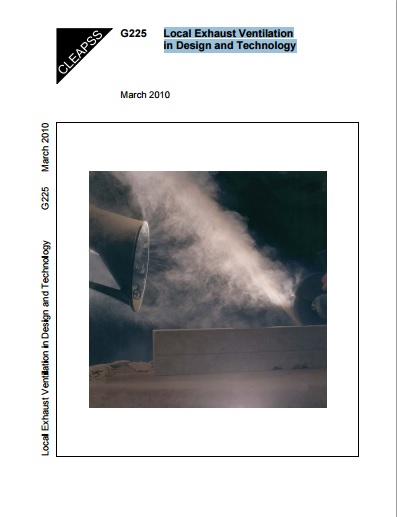CLEAPSS G225 Local Exhaust Ventilation in Design and Technology

Introduction
Local exhaust ventilation is used to remove or reduce the level of contamination in workplace atmospheres and thus reduce the risk of ill health in staff, students and visitors. It is essential that LEV is provided where the risk assessment shows it is required, that it is used, and that it is maintained in good working order. It is also essential that the correct type of LEV is installed so that contaminants are removed from the air. The purpose of this guide is to help those employers responsible for Design & Technology (D&T) departments in secondary schools and colleges to meet their legal responsibilities to preserve the health of their employees by the use of local exhaust ventilation (LEV) systems. It is not easy to establish just what standards these systems should meet and how their performance can be checked economically.
A subsidiary purpose is, therefore, also to help clarify the daily checks undertaken by the LEV users and the measurements made during the thorough examination and test. The guidance presented is based on published advice from the Health and Safety Executive (HSE), visits to school and college workshops (where measurements were made with a dust monitor and photographs taken using a dust lamp) and discussions with experienced health and safety advisers. The visits showed that:
- some LEV systems are not well-designed;
- some LEV systems are not supplied with performance data on installation. This is necessary so that subsequent testing can be compared with the performance on installation;
- tests are not being carried out within the statutory 14 month period (see section 2.2);
- there is considerable uncertainty over which tests are really adequate when contractors use different performance criteria;
- there is little recognition of the significance of the Workplace Exposure Limits (WEL) for wood dust (see section 3.2) and the consequent requirement to keep levels as low as reasonably practicable;
- inadequate maintenance often prevents systems from achieving the efficiency of which they are capable.

